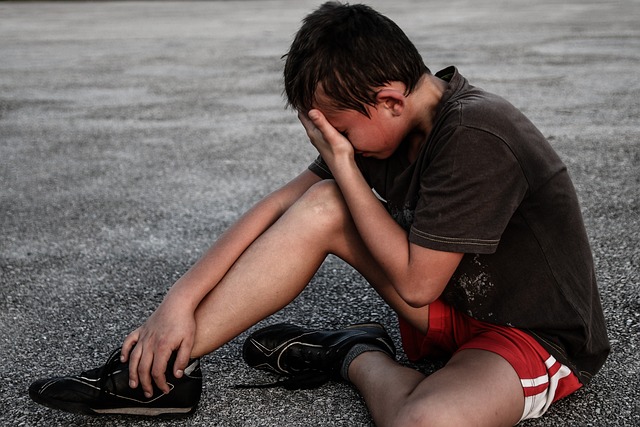Motorcycle lane splitting (or "filter riding") is a common urban practice where riders navigate between cars to avoid congestion but carries significant risks, notably collisions with trucks due to narrow spaces. This issue is particularly pressing in areas with dense traffic and tight lanes. While riders defend the technique as essential for city navigation, it introduces complexities in accident settlements, especially when involving injuries or negligence claims. To enhance safety, motorcyclists should follow local laws, maintain visible speeds, wear reflective gear, anticipate other drivers' actions, and keep a safe distance. Adopting these strategies can reduce the risk of lane splitting accidents and their associated legal and physical consequences.
In urban areas, motorcycle lane splitting—a common practice where riders navigate between lanes of traffic—carries significant risk. This phenomenon, though controversial, is a reality on congested city streets. This article delves into the factors contributing to motorcycle lane splitting accidents, exploring the behaviors and environmental conditions that increase danger. We also offer strategies for safer riding, aiming to mitigate risks for urban motorcyclists navigating this complex environment. Understanding these dynamics is crucial in promoting safer roads for all.
- Understanding Lane Splitting: A Common Practice in Urban Motorcycling
- Risk Factors Contributing to Motorcycle Lane Splitting Accidents
- Mitigating Risks: Strategies for Safer Urban Motorcycle Riding
Understanding Lane Splitting: A Common Practice in Urban Motorcycling

Motorcycle lane splitting, often referred to as “filter” or “split filtering,” is a common practice in urban areas where motorcyclists navigate through heavy traffic by moving between lanes of stopped or slow-moving vehicles. This technique allows cyclists to avoid congested traffic and reach their destinations faster. While it’s seen as an efficient way to commute, lane splitting carries significant risks, including potential collisions with other vehicles, especially trucks. The narrow spaces between lanes can make it difficult for drivers to see approaching motorcycles, increasing the likelihood of accidents.
In urban environments, where truck accident injuries are a concern, lane splitting adds another layer of complexity. Motorcyclists might find themselves in close proximity to large vehicles, which can cause serious injuries if an unexpected maneuver occurs. Despite these risks, many riders defend the practice as a necessary skill for navigating city streets efficiently. Understanding the dynamics of motorcycle lane splitting is crucial in gauging its role in urban mobility and potential contributions to accident settlements.
Risk Factors Contributing to Motorcycle Lane Splitting Accidents

Motorcycle lane splitting accidents are a significant concern in urban areas due to several risk factors. One major contributing factor is the dense traffic and narrow lanes typical of city centers, where motorcyclists often attempt to navigate between cars by ‘splitting’ lanes. This behavior can lead to collisions if other drivers are not expecting it or if the cyclist suddenly changes course.
Another factor is driver inattention and impatience, especially among urban commuters who may be stressed due to traffic congestion. Motorcyclists who lane split might appear as a surprise to these drivers, leading to accidental collisions. Moreover, weather conditions, such as poor visibility or wet roads, can exacerbate the risk by reducing stopping distances and affecting tire grip. Unlike real estate disputes or nursing home neglect, where legal avenues offer recourse, motorcycle lane splitting accidents often result in physical harm with limited legal protections, emphasizing the need for heightened awareness and safer traffic management strategies in urban planning.
Mitigating Risks: Strategies for Safer Urban Motorcycle Riding

To mitigate risks associated with motorcycle lane splitting accidents in urban areas, riders can adopt several strategies for safer riding. Firstly, understanding local laws and regulations regarding lane splitting is crucial. Many cities have specific guidelines that define when and where this practice is allowed, so riders should stay informed to avoid legal pitfalls. Secondly, maintaining a safe speed and being visible to other drivers are key. Riders should adjust their speed according to traffic conditions, ensuring they can react quickly if needed. Wearing reflective gear and using lights, especially during low-light conditions, can significantly enhance visibility.
Additionally, riders should anticipate the actions of other vehicles. Constantly scanning the surroundings and predicting potential hazards can help in making timely decisions. For instance, when approaching a car that is slowing down or making a turn, riders must decide whether to maintain their lane or split to avoid being rear-ended. Moreover, keeping a safe distance from other vehicles provides more time for reaction and reduces the impact of a possible accident. By combining these strategies, urban motorcycle riders can navigate traffic with greater safety, reducing the risk of accidents and potential incidents like caregiver abuse, wrongful death, or caregiver negligence.
Motorcycle lane splitting, while a common practice in urban areas, poses significant risks that can lead to accidents. By understanding the contributing factors such as driver behavior, road design, and environmental conditions, we can implement strategies to mitigate these risks. Encouraging safe riding practices, improving road infrastructure, and raising awareness among all road users are essential steps towards reducing the occurrence of motorcycle lane splitting accidents in urban environments.





